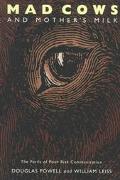The U.S. Department of Agriculture (USDA) announced an atypical case of Bovine Spongiform Encephalopathy (BSE), a neurologic disease of cattle, in an eleven-year old cow in Alabama. This animal never entered slaughter channels and at no time presented a risk to the food supply, or to human health in the United States.
 USDA Animal and Plant Health Inspection Service’s (APHIS) National Veterinary Services Laboratories (NVSL) have determined that this cow was positive for atypical (L-type) BSE. The animal was showing clinical signs and was found through routine surveillance at an Alabama livestock market.
USDA Animal and Plant Health Inspection Service’s (APHIS) National Veterinary Services Laboratories (NVSL) have determined that this cow was positive for atypical (L-type) BSE. The animal was showing clinical signs and was found through routine surveillance at an Alabama livestock market.
BSE is the form that occurred primarily in the United Kingdom, beginning in the late 1980’s, and it has been linked to variant Creutzfeldt-Jakob disease (vCJD) in people. The primary source of infection for classical BSE is feed contaminated with the infectious prion agent, such as meat-and-bone meal containing protein derived from rendered infected cattle. Regulations from the Food and Drug Administration (FDA) have prohibited the inclusion of mammalian protein in feed for cattle and other ruminants since 1997 and have also prohibited high-risk tissue materials in all animal feed since 2009.
Atypical BSE is different, and it generally occurs in older cattle, usually 8 years of age or greater. It seems to arise rarely and spontaneously in all cattle populations.
This is the nation’s 5th detection of BSE. Of the four previous U.S. cases, the first was a case of classical BSE that was imported from Canada; the rest have been atypical (H- or L-type) BSE.
